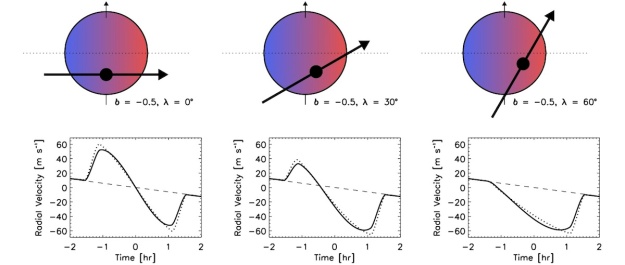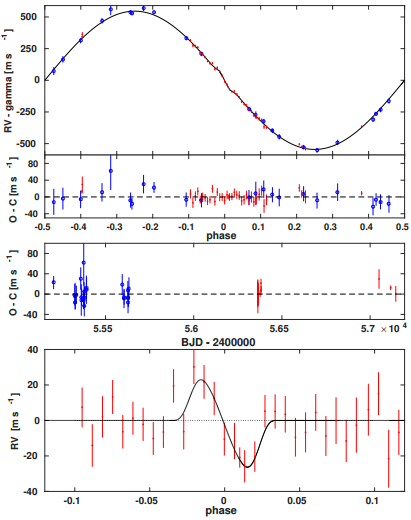Tidal interactions between close-in, gas-giant exoplanets and their host star should cause the orbits of the planets to decay. The crucial number in determining how fast that happens is the “quality factor”, Q, which tells us the fraction of the tidal energy that is dissipated in each cycle. A high value of Q, say 107, means that only 1 part in 107 of the energy is dissipated, giving a low rate of orbital decay. A smaller value gives a faster decay.
A new study by Kaloyan Penev et al suggests that Q varies a lot depending on the tidal “forcing period” (that is, the period at which a planet would appear to orbit, if viewed when rotating with the spinning star, with an extra factor of a half since there are two tides per orbital cycle).
Penev estimate the value of Q by comparing the observed spin period of the host star to the most likely spin period expected for that sort of star, if it had no planet, and so modelling how much the star has been spun up by the tidal interaction with the planet.
They find that the Q of the star is high, about 107, when the tidal forcing period is low (< 1 d) but much smaller, about 105.5, when the forcing period is longer.

This work might resolve several puzzles. The Q value expected from studying binary stars is near 105.5, but if that were true for all hot Jupiters then they’d be destroyed too readily, and the current observed population could not be explained. This puzzle is resolved if their orbits decay much more slowly when the forcing period is short.
The different Q values also allow the planets to re-align their orbits with the spin of the star (so that the orbital plane is perpendicular to the star’s spin axis) on a timescale shorter than the orbital period decay, thus explaining why there are many “aligned” hot Jupiters.




